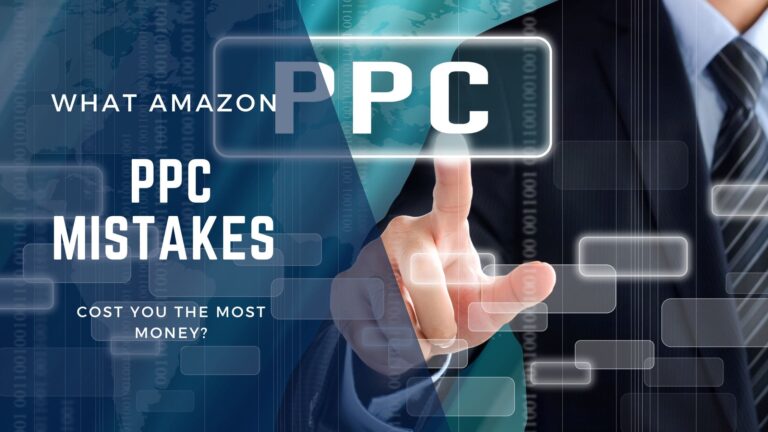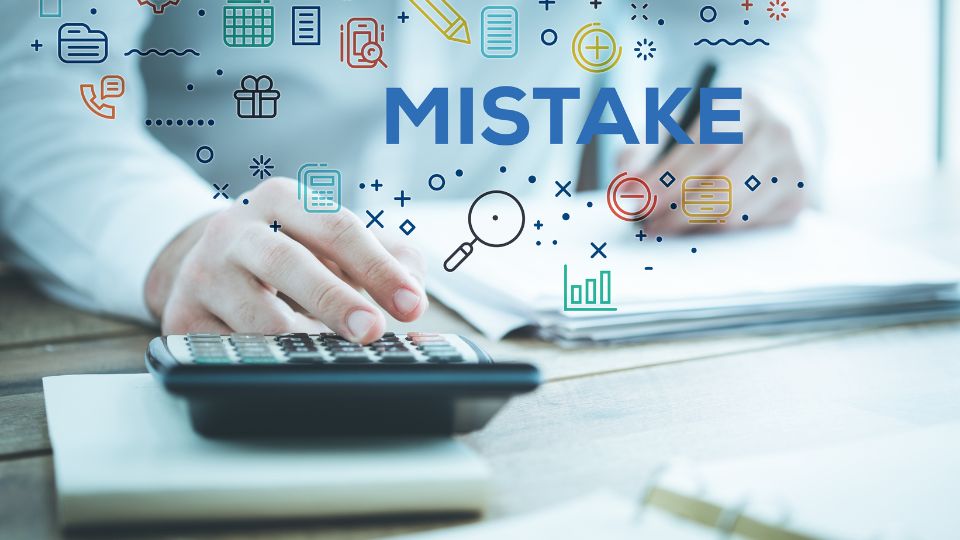Why Amazon PPC Mistakes Are So Costly
When Ravi, a mid-level Amazon seller, logged into his Seller Central dashboard one Monday morning, he froze. His ad spend had ballooned overnight, yet his sales graph was flat. At first, he thought it was a reporting lag, but as the week went on, he realized something was terribly wrong—his Amazon PPC campaigns were bleeding money. What should have been his biggest profit driver had quietly turned into a profit killer.
This story isn’t unique. Many sellers jump into Amazon PPC with high hopes, only to discover that poor strategy, unchecked assumptions, and simple oversights can drain thousands from their budgets. The truth is, Amazon PPC mistakes are not just technical slip-ups; they’re silent profit leaks. If left unchecked, they can eat into margins, distort metrics, and make sellers believe Amazon itself is unprofitable.
The good news? These mistakes are avoidable. By understanding the most common errors and learning how to recognize and fix them, you can transform your advertising campaigns from money pits into growth engines. Let’s break down exactly which Amazon PPC mistakes cost you the most money—and how to stop them before they ruin your bottom line.
The Most Common Amazon PPC Mistakes Sellers Make
Poor Keyword Research and Targeting
One of the most common Amazon PPC mistakes is starting with weak keyword research. Sellers often overuse broad, generic terms like “phone case” or “yoga mat,” believing more traffic means more sales. In reality, these broad terms are costly, competitive, and rarely convert at a profitable rate.
What gets overlooked are profitable long-tail keywords—the detailed, lower-volume search terms like “waterproof yoga mat for hot yoga.” These phrases may bring in fewer clicks, but their intent is stronger, CPC is lower, and conversion rates are higher. Ignoring them means you’re spending more to make less, while your competitors quietly scoop up high-converting traffic. For a structured approach to keyword discovery and scaling, see how to scale your ads profitably.
Overbidding or Underbidding
Another error is mismanaging bids. Sellers sometimes overbid in the hope of dominating placements, only to burn through their budgets on expensive clicks that don’t convert. On the flip side, underbidding leaves ads buried, losing impressions and sales to competitors who understand the balance.
Finding the right bid requires more than gut instinct. It demands testing, adjusting, and closely monitoring performance data. Overbidding or underbidding is less about ambition and more about failing to read the signals Amazon’s data is already giving you.
Ignoring Negative Keywords
Nothing drains a budget faster than irrelevant clicks. Sellers who ignore negative keywords end up paying for clicks that have zero chance of converting. Imagine advertising for “leather handbags” and showing up for searches like “free handbag pattern.” Every click is wasted money.
Negative keyword hygiene isn’t glamorous, but it’s powerful. By building a proactive list of negatives, you prevent irrelevant clicks, protect your budget, and make every impression more targeted. Failing to do so is like pouring water into a leaky bucket—you’ll never fill it up.
Amazon Advertising Mistakes That Drain Profits
Bad Campaign Structuring
Many sellers launch campaigns without structure—lumping multiple ASINs into a single campaign or combining unrelated keywords. The result? Chaotic data and no clear sense of what’s working.
Good campaign structure creates clarity. Separating campaigns by product, keyword type, and objective allows you to test effectively, allocate budget wisely, and scale with confidence. Bad structuring, on the other hand, clouds your metrics and forces you to guess. And in PPC, guessing is expensive.
Wrong Match Types
Amazon offers broad, phrase, and exact match types—but sellers often lean too heavily on broad match. While broad can uncover new opportunities, it’s also a magnet for irrelevant clicks. Exact match, meanwhile, gives more control and precision.
Using the wrong match types—or failing to balance them—is one of those Amazon advertising mistakes that silently drains profits. A smart mix of broad for discovery, phrase for control, and exact for profitability helps campaigns evolve without burning cash.
Not Testing Ad Creatives/ Product main image
Clicks are not created equal. Two ads targeting the same keyword can have wildly different click-through rates (CTR) depending on headline, copy, or product image. Sellers who don’t test creatives/ Product main image miss out on higher CTRs, better conversions, and lower CPCs.
Testing ad copy and creatives isn’t optional; it’s the difference between average and exceptional performance. Neglecting this means leaving profits on the table. If your CTR is lagging, start here to boost product CTR.
Costly Amazon PPC Mistakes to Avoid
Over-reliance on Auto Campaigns
Auto campaigns are great for discovery, but they’re not designed to be your main strategy. Sellers who rely solely on autos hand control of targeting and bidding to Amazon, often ending up with high spend and poor returns.
Manual campaigns, on the other hand, let you refine, target, and scale. A balanced approach—using autos for insights and manuals for profit—is key. Depending only on autos is a costly mistake that leaves too much up to chance.
Neglecting Long-Tail Keywords
Long-tail keywords may seem unglamorous compared to high-volume terms, but they’re gold mines for profitability. They cost less, convert better, and face less competition. Tools like Helium 10 or Cerebro make uncovering these opportunities easy, yet many sellers neglect them.
Failing to target long-tail keywords is one of those costly Amazon PPC mistakes that compounds over time. Your competitors who do embrace them will quietly outpace you in both sales and profitability.
Letting Ads Run Without Monitoring
Amazon PPC is not “set and forget.” Yet, many sellers launch campaigns and walk away, only to discover weeks later that their ads have been burning money unchecked.
Without weekly optimization checks, you risk paying for irrelevant clicks, outdated keywords, and unbalanced bids. In PPC, neglect is just as dangerous as poor strategy.
Amazon PPC Errors in Tracking and Metrics
Misreading ACoS
One of the most misunderstood metrics in Amazon PPC are ACoS (Advertising Cost of Sale). Sellers often chase vanity metrics, celebrating low ACoS without realizing it’s hurting their rankings— while their sales stagnate.
The real key is balance. Blended metrics—analyzing both paid and organic sales—give a clearer picture of profitability. Misreading ACoS is one of the most common Amazon PPC errors, and it’s one that distorts decision-making.
Ignoring Click-Through Rates
CTR is a window into ad relevance. Low CTR means your ad isn’t compelling enough for the keyword it’s targeting. Sellers who ignore CTR miss early warning signs that something’s wrong—be it copy, image, or targeting.
Improving CTR often means tweaking creatives/ Product main image, adjusting bids, or refining targeting. Ignoring it guarantees you’ll keep paying for impressions that don’t convert.
Not Tracking Conversion Data
At the end of the day, what matters is whether clicks turn into sales. Sellers who don’t track conversion data miss insights into which ASINs, keywords, or ads are truly profitable.
Amazon provides reports and tools for this, and third-party solutions can take it further. Without tracking, you’re driving blind. And blind driving is costly. To add rigor to your analysis, regularly use Brand Analytics.
Amazon PPC Pitfalls That Hurt Growth
Treating PPC as “Set and Forget”
Markets change, competitors shift, and consumer behavior evolves. Yet, some sellers treat PPC as a one-time task. This mindset is one of the biggest Amazon PPC pitfalls.
Campaigns need regular reviews, adjustments, and scaling. Set-and-forget PPC leads to stagnation at best and losses at worst.
Focusing Only on Sales, Not Ranking
Sales matter, but PPC isn’t just about immediate conversions—it’s also about long-term ranking. Sellers who focus only on sales miss the bigger picture: PPC drives visibility, which drives ranking, which drives organic sales.
Balancing sales velocity with ranking strategy is essential. Otherwise, you’re always paying for traffic without building long-term equity. Beyond ads, your Storefront can help build brand awareness, which supports ranking and conversion lift across the catalog.
Lack of Budget Allocation Strategy
Budget mismanagement is another silent killer. Sellers who fail to allocate budgets strategically often run out mid-month, missing prime sales windows, or overspend during low-demand periods.
Smart budget allocation considers seasonality, product lifecycle, and category trends. Without it, your campaigns suffer from feast-or-famine performance.
How Much Does a Bad Amazon PPC Strategy Cost?
Bad PPC strategy doesn’t just waste ad spend—it erodes profit margins, reduces rankings, and locks you into an endless cycle of overspending. The hidden costs are everywhere: inflated CPCs, missed ranking opportunities, and diminished profit margins.
Consider this: a seller spending ₹1 lakh per month with a poorly optimized campaign may lose ₹30,000–₹40,000 outright in wasted spend. That’s not counting the lost sales from lower rankings or the opportunity cost of investing that money elsewhere. Profits vanish quickly when PPC isn’t managed with care.
How to Avoid Wasting Money with Amazon PPC
The solution is not complicated, but it does require discipline. Build smart keyword lists that balance broad and long-tail opportunities. Add negative keywords proactively to stop budget leaks before they start. Most importantly, adopt ongoing optimization habits—reviewing campaigns weekly, testing creatives/ Product main image, and adjusting bids.
Amazon PPC is a living system. The sellers who thrive are those who treat it as an evolving discipline, not a one-time setup.
Why Is My Amazon PPC Campaign Not Profitable?
If your campaigns aren’t profitable, it’s usually because of one of three red flags: poor targeting, lack of optimization, or chasing vanity metrics. Sometimes it’s all three.
Knowing when to scale versus pause is also critical. If a keyword shows high CTR and strong conversion, scale it. If it bleeds money with no sales, pause it. Use reports and data—not assumptions—to make these decisions.
Profitability isn’t luck; it’s the result of intentional choices.
What Metrics Should I Monitor to Avoid PPC Losses?
The key metrics are simple: ACoS, CTR, and CVR (Conversion Rate). Track them consistently and benchmark them against category standards. A 20% ACoS may be good in one niche but unsustainable in another.
Setting up dashboards—whether in Seller Central, Helium 10, or custom spreadsheets—helps you monitor these metrics in real time. By keeping your finger on the pulse, you avoid costly surprises and make smarter, faster decisions.
FAQs About Amazon PPC Mistakes
What are the most common Amazon PPC mistakes sellers make?
The most common errors include poor keyword research, ignoring negative keywords, overbidding, bad campaign structuring, and not testing creatives/ Product main image.
How much does a bad Amazon PPC strategy cost you?
It can cost thousands per month in wasted spend and even more in lost ranking opportunities and profit erosion.
How can I avoid wasting money with Amazon PPC?
By building smart keyword lists, using negative keywords proactively, and continuously optimizing campaigns instead of treating them as set-and-forget.
Why is my Amazon PPC campaign not profitable?
Profitability issues usually come from poor targeting, weak optimization, or chasing vanity metrics. Fixing these can turn loss-making campaigns into profitable ones.
What metrics should I monitor to avoid PPC losses on Amazon?
Keep an eye on ACoS, CTR, and CVR, and always benchmark them against category standards to ensure campaigns are competitive.
Conclusion: Smarter PPC = More Profit
Amazon PPC doesn’t have to be a money drain. The same tool that can bankrupt a careless seller can also skyrocket a strategic one. The difference is knowledge, discipline, and consistency. By avoiding common Amazon PPC mistakes, you protect your budget, strengthen your rankings, and set yourself up for long-term profitability.
Remember, smarter PPC equals more profit. Start by fixing one mistake today, and you’ll see the compounding effect in your sales tomorrow.
If you’re ready to stop wasting money and start scaling profitably, it’s time to refine your PPC strategy now. Learn, apply, and optimize—the results will speak for themselves. For hands-on help, consider our Expert Amazon account management services.








